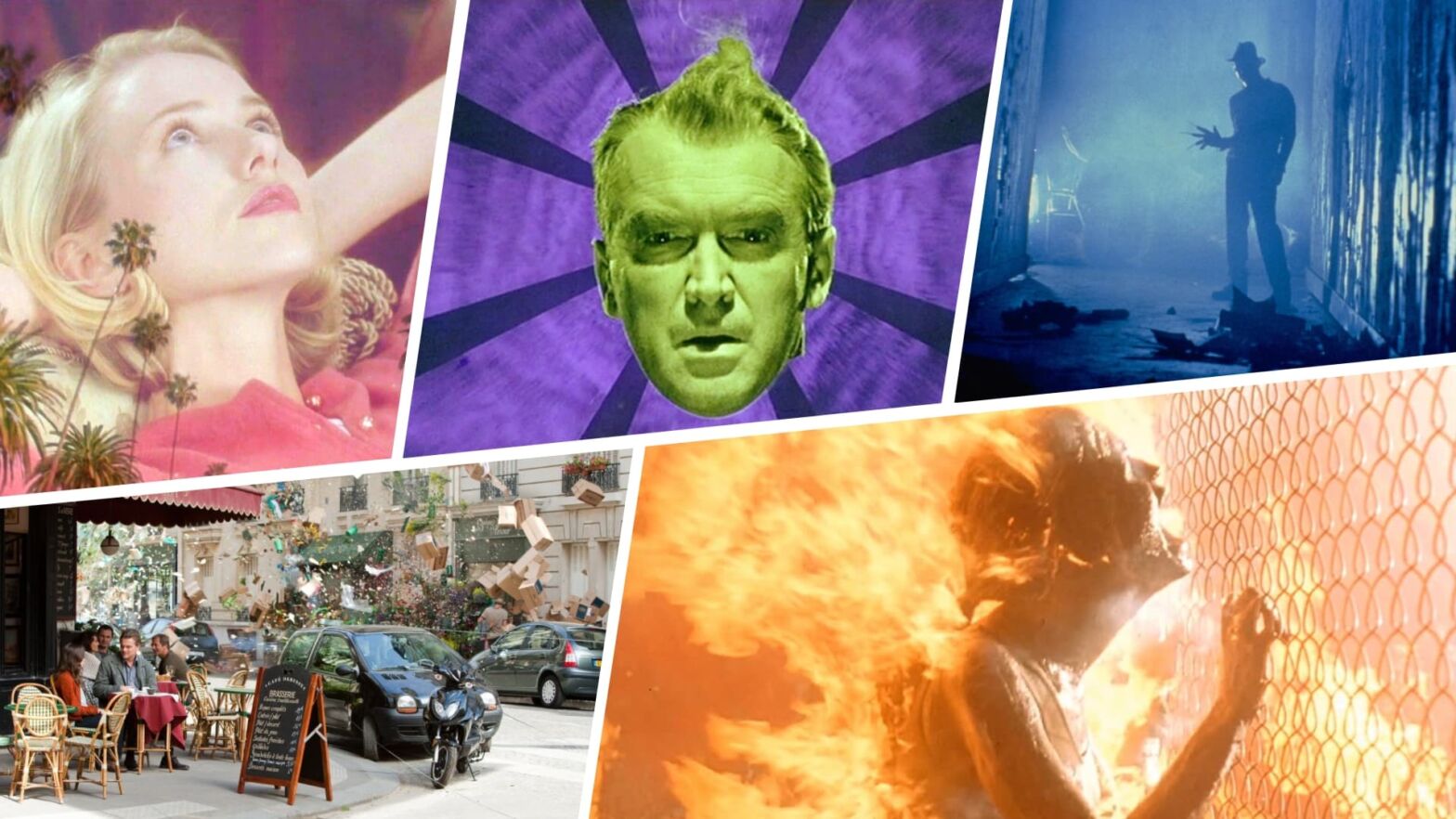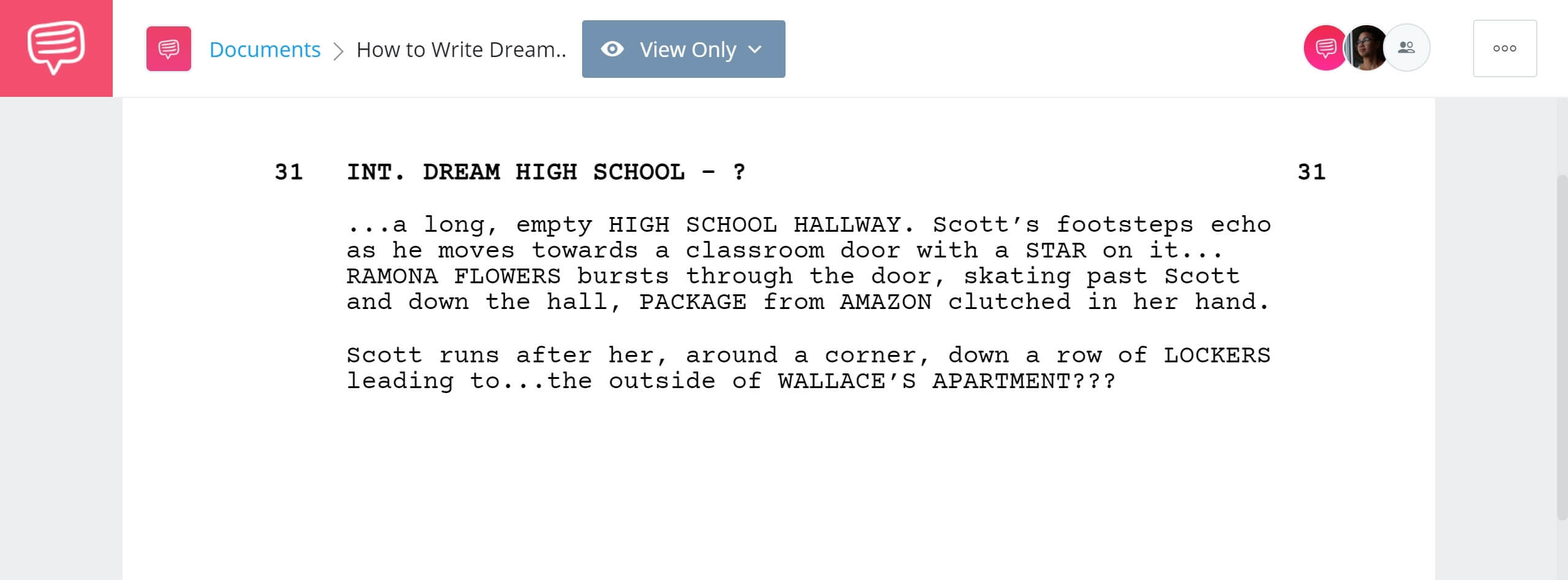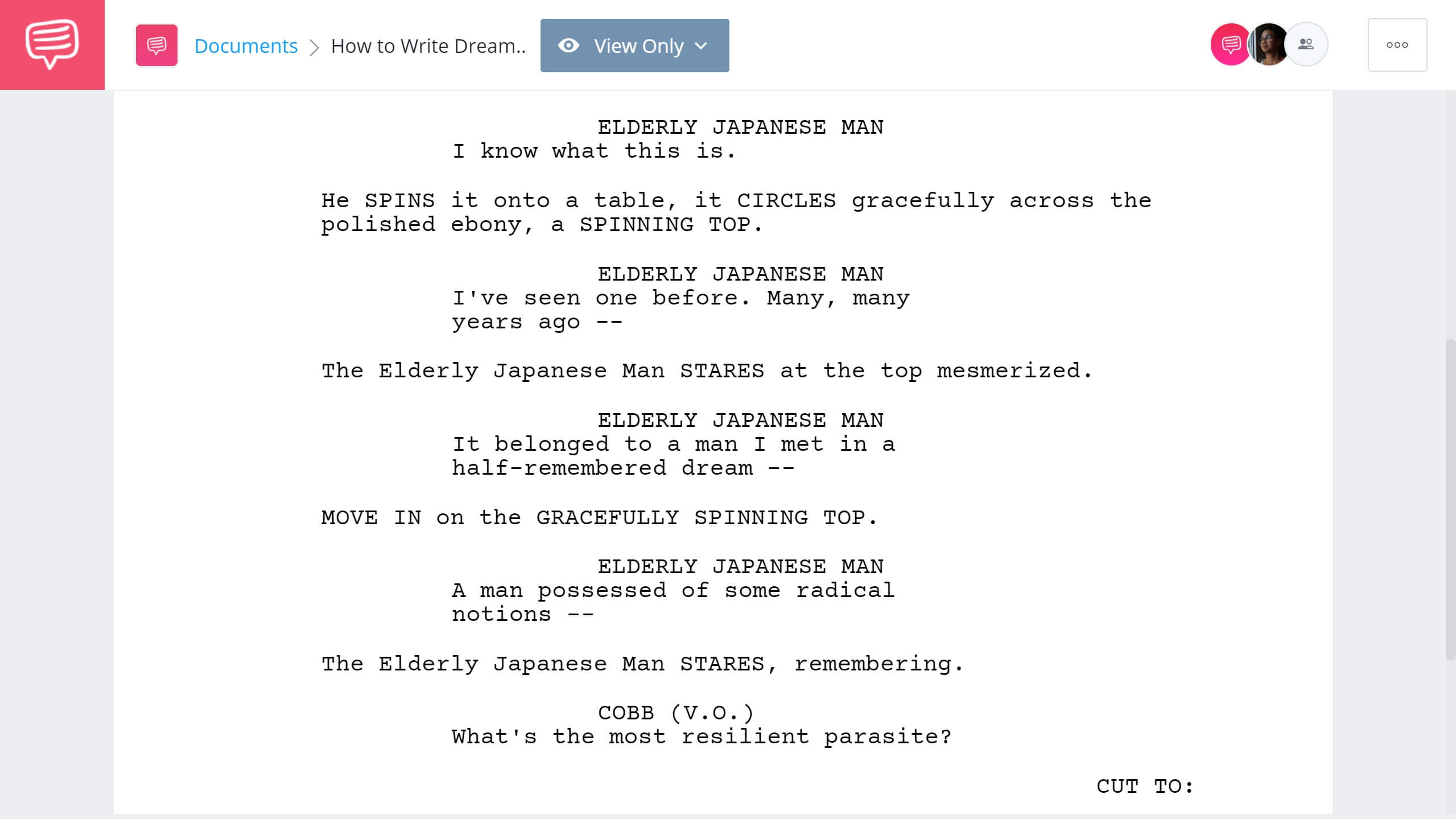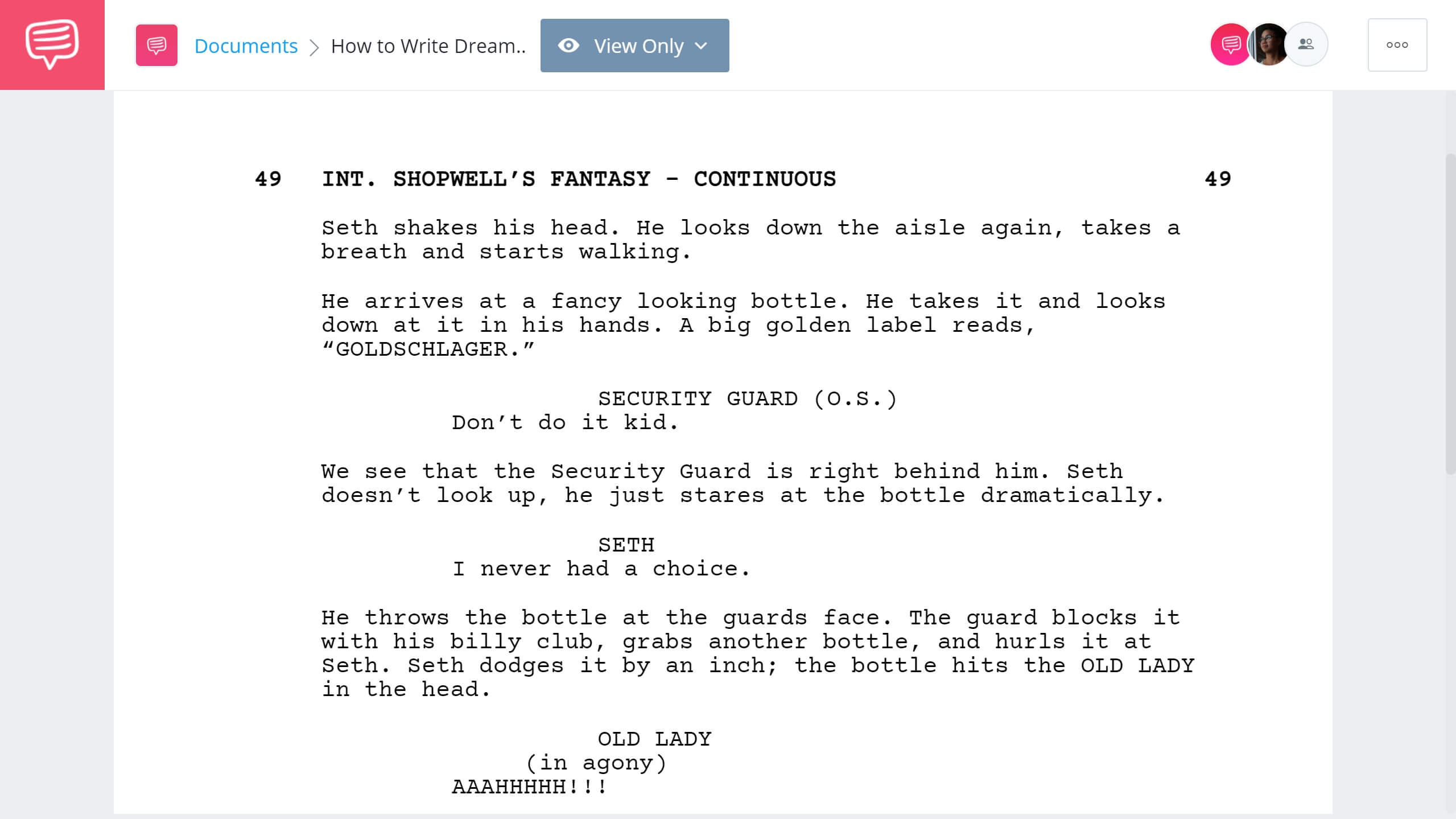It is not uncommon for writers to find inspiration from their dreams. Dreams are a canvas of the subconscious that humans have innately interpreted throughout history. This allure to deciphering dreams has made them an incredible storytelling mechanism. Many screenwriters utilize dream sequences for their strong imagery and effective storytelling abilities. In this article, we’ll analyze how to write dream sequences in film and the do’s and don’t of the craft.
How to write dream sequences in film
Define the purpose of the dream
The very first step in learning how to write dream sequences in film is to ensure that the dream sequence you are writing has a purpose. Whether it is thematic, plot-driven, or character-driven, a dream sequence should serve the story just like every other scene. Here are a few ways your dream sequence and function for the story of your screenplay.
Advance the plot
While they may not be rooted in reality, dreams can be a part of cause and effect sequences. Specifically, a character’s actions may be prompted because of a dream they have.
Take this scene from Terminator 2: Judgement Day for example. Sarah Connor has a horrible nightmare in which a nuclear explosion wipes out everyone around her.
Example of a dream sequence • Terminator 2
This dream prompts her to try and prevent this event from happening. Not only can these dreams be a tool for foreshadowing, they prompt actions in characters. Because this dream is a part of a cause and effect sequence, it effectively advances the plot and moves the story forward.
Another way dream sequences advance a plot is by incorporating them into the structure of your screenplay. Dream sequences literally become plot points that move a story forward.
Illustrate a character’s desires
Dreams in films tend to reflect the psyche of a character. Therefore, they often reflect what a character wants. Dreams that show characters achieving or obtaining what they desire perfectly show the audience very clearly what their internal or emotional goal is.
In this scene from Dumb and Dumber, Lloyd’s day dream wanders off as he thinks about the best case scenario when finally meeting Mary.
Dumb and Dumber • Example of a dream sequence
The dream is a hilarious moment that also informs the audience on Lloyd's desires as well as expectations. This effectively raises the stakes for when Lloyd finally meets Mary.
Portray internal conflict
Some dreams, however, don’t portray future events in the best case scenario. Some dreams reflect a character’s fears as well. These dream sequences effectively illustrate a character’s internal conflict as they weigh the possible outcomes of their decision, both good and bad.
A great example of this type of dream sequence can be found in Superbad. When Seth walks into a grocery store to try and buy liquor as an underage teenager, his mind wanders as he weighs the possible outcomes.
Superbad • Example of a dream sequence
While these dream scenarios are hilarious, they all capture Seth’s fears and internal conflict in buying the booze. Rather than seeing him walk in, look around and walk out, we get a glimpse at what he is thinking that led to his final decision.
Remember, these are only a few ways to define the purpose of your dream sequence. Whatever the purpose of your dream sequence may be, make sure you can define the specific way it serves the story of the film.
Related Posts
How to write dream sequences in film
Determine the logic of the dream
After defining the purpose of your dream sequence, it’s time to determine the rules it plays by. Dreams, as they occur in our own lives, can be either uber realistic or incredibly far-fetched.
Dreams in a film can also behave in either way.
It’s important to determine what type of dream your sequence will be. What logic is the dream founded in. Is it so realistic that the character and/or the audience thinks it is reality? Or is the dream so surrealistic that it draws attention to the fact that it is a dream?
Surrealistic
The surrealistic dream is so illogical that it makes the audience aware of the dream state of the sequence. This can be used to create intriguing imagery that portrays a character’s subconscious.
This dream sequence in Scott Pilgrim vs. the World increases the levels of surrealism through a seamless transition from reality to a dream state. We brought the Scott Pilgrim vs. the World screenplay into the StudioBinder screenwriting app to take a better look at how it was written.
Scott Pilgrim VS. the World • Script dream sequence
Notice how the slug line even says “DREAM HIGH SCHOOL” drawing attention to the obvious dream state. The final cut of this scene even uses sound design and production design to further elevate the surrealism of the dream sequence.
Scott Pilgrim VS. the World • Zelda Fairy Fountain Dream Sequence
Realistic
On the other side of the dream sequence is the realistic dream. These dreams play by the same logic as reality and can therefore be mistaken as reality. Realistic dreams can be tricky because you don’t want to outright mislead the audience for the sake of a twist (more on this later).
But realistic dreams that appear to be reality can be an important thematic point or plot point that plays into the story. Few examples of this effect are better than the final scene in Inception, one Christopher Nolan’s best films.
The entire plot and structure of Inception is based on dreams and many of them tend to veer toward surrealism. However, the final scene of the film utilizes the “realistic “ dream so well that many still argue whether the final scene was a dream at all. We reviewed the various interpretations of Inception's dream vs. reality debate in another post. (Spoilers ahead)
Inception • Ending Scene Full
Walking the line of misleading the audience versus intrigue the audience can be difficult. But as Nolan shows, the payoff can be incredible. We brought the Inception script into the StudioBinder screenwriting app to analyze how Nolan introduces the dream world to a story’s characters as well as the audience. In fact, Nolan does it in the very first scene.
Inception • Ending Scene Full
Planting the idea (no pun intended) of dreams is critical in the beginning of the film as the plot unfolds.
Because dream sequences are a matter of walking a narrative line, it’s also important to talk about the things to avoid when writing a dream sequence.
How to write dream sequences in film
Avoid the flashback dream
Exposition can communicate key information for audiences to latch onto and invest in a story. Executing exposition is one of the toughest things to do as a screenwriter. All too often, screenwriters utilize the flashback dream sequence to lay out exposition.
The problem with this technique is that it is rarely done well. Flashback dreams that serve as exposition are often on the nose and work as a crutch.
In other words, using dreams for exposition is often considered a lazy way to communicate to the audience.
If you’re looking for better ways to lay out exposition in your screenplay other than the dream sequence, check out this video by Thomas Flight. The video is a supercut of exposition done properly. Note how none are a dream sequence.
Script dream sequence • In Praise of Exposition
If you’re wondering whether or not your dream sequence is too on the nose as exposition, ask yourself “Is this the only purpose the dream serves?” If it is, try to find another way to lay out your exposition.
Related Posts
How to write dream sequences in film
Dreams shouldn’t mislead the audience
An overarching mistake screenwriters make when writing dream sequences is intentionally misleading the audience. This is often done to raise the stakes of a story. While this may help get you to an exciting climax, it also leads to a lackluster ending.
Misleading dream sequences can get more and more consequential to get the audience more invested. But when the climax happens and these stakes are revealed to be grounded in a dream, audiences may have enjoyed the ride but they will hate how it ends.
An example of this can be seen at the end of Click (spoilers ahead). At the climax of the film, Michael finally faces the consequences of fast forwarding through everything he hates in life. However these consequences are merely wiped away when we find out they all occurred in a dream.
How to Write Dream Sequences in Film • Click Ending
Sure the film tries to tie the knot by saying it was really the Angel of Death that gave Michael another shot. The damage, however, is done. That emotional climax becomes less memorable when the audience realizes it wasn’t real.
These misleading dreams are usually intended to fake out the audience into a more exciting climax. Ultimately, it leads to a subpar ending that leaves an audience feeling misled.
Human beings are naturally drawn to interpreting dreams, even if they belong to characters in a story. Using this to your advantage as a storyteller is a great idea. Executing this idea, however, can be tough. Hopefully this article has informed you on how to write a clever, story-based dream sequence that may end up being the most memorable scene in your screenplay.
How to write dream sequences in film
Dream sequence screenplay format
Once you’ve decided on the content of the dream sequence and dialed in on how it will contribute to your story, it’s time to put it into the screenplay. Let’s take a look at the Superbad screenplay of the scene we mentioned earlier.
As we look at the script in the StudioBinder screenwriting app, we can see how Seth Rogen and Evan Goldberg formatted different dream sequences with slug lines. Within the script, it may be important to tell the reader that the scene that is about to occur is out of the context of reality. Goldberg and Rogen add “Fantasy” in the slug line of each dream sequence to make this clear.
Learning how to write slug lines will give you the tools needed to bring your dream sequences to life. When it comes to screenplay formatting, remember, your script should create a visual of what the cinematic story will look like. However, it also needs to give clear context of a scene to the reader especially when writing dream sequences.
Dream sequences have created some of the most memorable scenes in cinema. However, they have also resulted in some of the worst scenes in cinema. Following these tips on how to write a dream sequence in a screenplay will guide you in the right direction of hopefully writing the former.
UP NEXT
How to write a montage
Writing a dream sequence in your next project? The montage might just be the ideal format, especially when dreams can jump between time and space so easily. Therefore, let's learn how to write a montage, including some pro-tips on formatting, spacing, and clarity.



